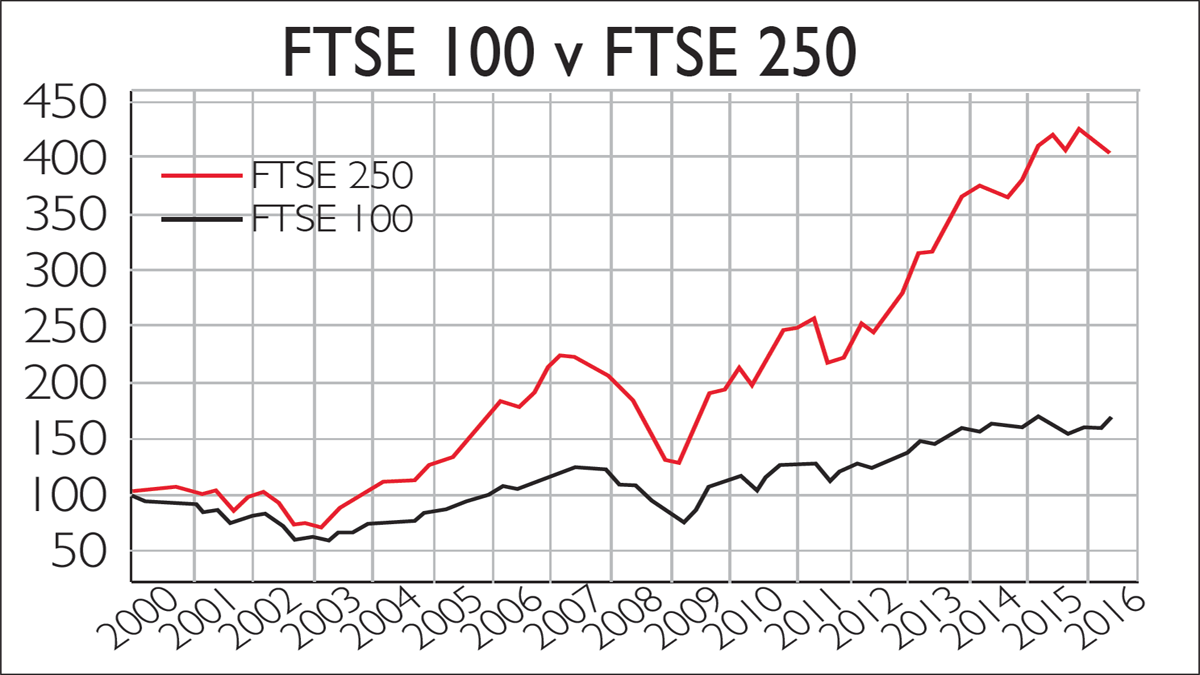
The result of the EU referendum led to dramatic falls in both the FTSE 100 and the FTSE 250. However, while the FTSE 100 quickly recovered, the FTSE 250 is still markedly down. So which index should we be looking to for the most accurate gauge of the health of the British economy?
The stocks in the FTSE 100 are the largest UK-listed firms. Many are global companies that have the majority of their operations and sales outside the UK. For example, HSBC, which accounts for 5% of the index, is a familiar presence on the high street, but the UK accounts for less than a quarter of its assets and revenues. Overall, less than a third of total profits for FTSE 100 stocks come from the UK. What’s more, the index is skewed heavily toward certain sectors. BP, Royal Dutch Shell and British Gas account for 12.3% of the market, even though oil and gas is just 2% of the UK’s GDP. Banks, insurance companies and other financial services (which account for 10% of value added and 4% of jobs in the UK economy) make up 20%.
The FTSE 250, which includes the 250 next-largest stocks, is much more focused on the domestic economy. The top ten constituents include firms such as online estate agents Rightmove and the property developer Bellway, both of which will be deeply affected by economic developments here. There are still international firms in the index: the largest constituent, Smiths Group, gets only 4% of revenue from the UK. And the skew towards certain sectors remains.Energy is a much more realistic 3%, but financials account for nearly 35% of the index. However, the FTSE 250 is a better overall barometer for the UK economy.
The FTSE 250 tends to be more volatile than the FTSE 100: not only has it suffered more in the aftermath of the referendum, but it was also hit harder by the 2008 crash. But over the long term, it has done much better. Investing £100 into the FTSE 250 three decades ago would have left you with £2,415 today, compared with £1,225 for the FTSE 100. This amounts to an annual return of 11.2%, compared with 8.7% for the FTSE 100. This is consistent with an extensive body of research that shows that smaller firms tend to deliver higher returns than their larger counterparts.
Lastly, what of the FTSE All-Share index? This includes the constituents from the FTSE 100 and the FTSE 250, as well as smaller companies, so it should be the broadest measure of the market. However, the size of the FTSE 100 companies means that they account for 80% of the overall market cap, so the performance of the FTSE All-Share (and also of the FTSE 350, which includes FTSE 100 and FTSE 250 stocks) is very similar to that of the FTSE 100.